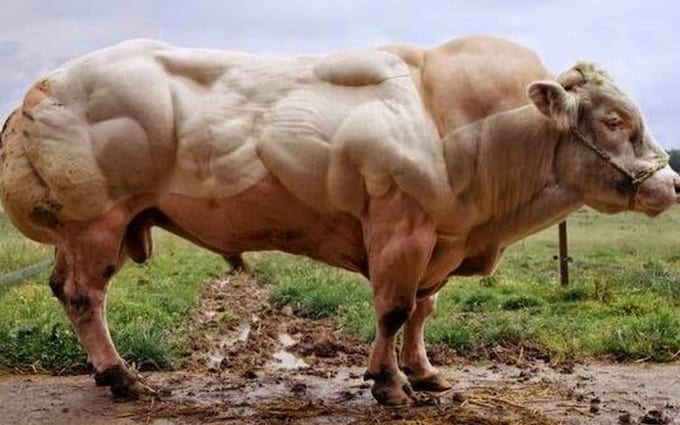
The brief from the Department for Environment,Food and Rural Affairs mentioned the possibility of pivoting to muscular European breeds such as the Belgian blue
British scientists are investigating whether replacing traditional breeds of cow with a “double muscled” breed could be better for the environment.
Cattle farming is a major source of greenhouse gases because the animals need land to graze,and they produce vast volumes of flatulent methane,which is 80 times more potent for global warming than carbon dioxide.
Britain currently has cow herds and breeds specifically for dairy,some only for beef,and some cross-breeds which can be used to produce both meat and milk.
The Department for Environment,Food and Rural Affairs (Defra) has funded a study with more than £10,000 of taxpayers’ money in which scientists at Harper Adams in Shropshire,a specialist agricultural university,will investigate possible ways of reducing emissions.
Possible routes being studied include increasing the use of dual-use cows instead of dairy-only herds and also swapping traditional British breeds for more muscular breeds that produce more meat.
Scientists conducted a modelling study using farm data and previously published information to see if these switches would improve emissions.
Swapping the traditional black and white dairy cows,holsteins,for dual-use cattle was one aspect of the study. The second aspect involved seeing if swapping herefords or angus cows for super-muscular breeds would be beneficial.
The brief from Defra mentioned the possibility of pivoting to European breeds,such as the charolais or Belgian blue,but the scientists focused on the British blue.
The British blue has a gene mutation that allows it to naturally grow 20 per cent more muscle mass compared with other breeds while the animal is fine-boned and docile by nature,which leads to high volumes of meat produced per animal.
“British blue cattle tend to be more efficient with faster growth rates,higher carcass weights and a lower age at slaughter,which reduces their carbon footprint compared with the angus breed,” said Prof Jude Capper,lead author of the Government-commissioned study at Harper Adams University.
“Bulls of any breed (compared with heifers or steers) can be dangerous,but there’s no reason to think that British blues would be any more or less dangerous.
“This was a modelling study based on a mixture of actual farm data and data from peer-reviewed papers. Every farm and system is different,but we’d expect the same trends seen in this study to be representative of the UK beef industry.”
Data from the study show that using some cross-breeds could reduce greenhouse gas emissions from British cattle herds by about 4 per cent,however it came at the expense of a reduction in the amount of beef created for sale.
However,if more cows were grown for beef to make up for the shortfall,there would still be a 3.1 per cent drop in overall emissions,the models calculate.
“When we looked at dual-purpose breeds,their use did reduce the total cattle industry (dairy plus beef) carbon footprint,but only by a small proportion,around 4 per cent,” said Prof Capper.
“A far bigger obstacle would be convincing all dairy farmers to move to a dual-purpose breed with a lower milk yield,given that about 90 per cent of dairy cows in the UK are the relatively higher-yielding holstein friesians.”
Defra declined to comment.

Explore our curated content, stay informed about groundbreaking innovations, and journey into the future of science and tech.
© ArinstarTechnology
Privacy Policy